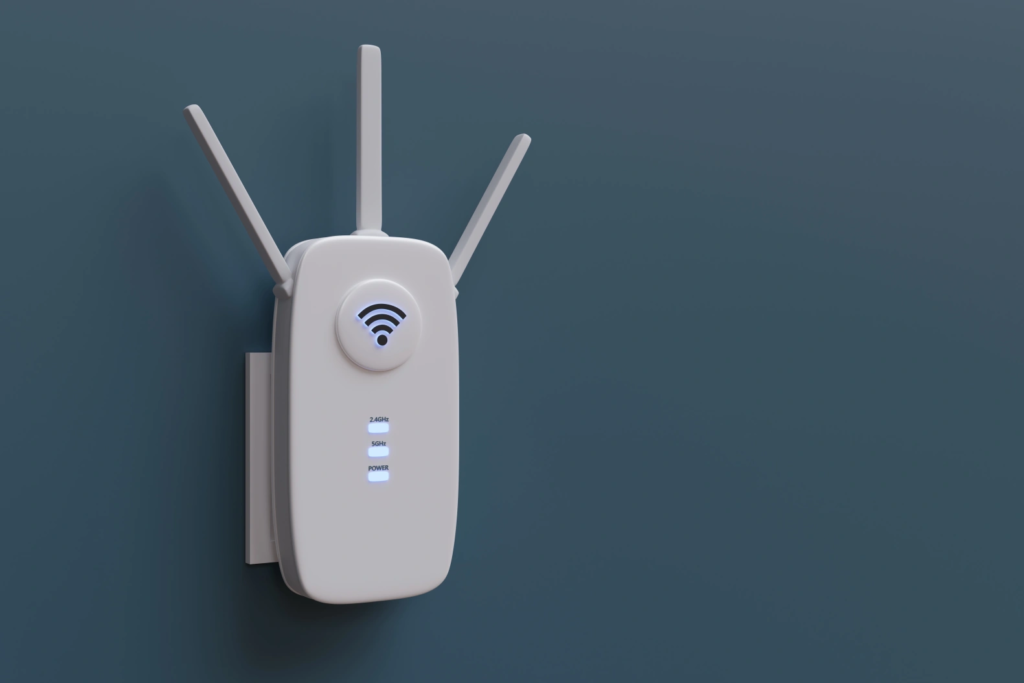In today’s digitally connected world, a stable and fast Wi-Fi signal is a necessity. We rely on it for work, entertainment, and communication. However, even the best routers can have trouble reaching every corner of our homes or offices. This is where wireless repeaters come into play. In this article, we will delve deep into the world of wireless repeaters, exploring what they are, how they work, and how you can use them to enhance your Wi-Fi coverage. So, let’s embark on a journey to boost your Wi-Fi signal strength.
Table of Contents
- Understanding the Basics
- What Is a Wireless Repeater?
- How Does a Wireless Repeater Work?
- Benefits of Using a Wireless Repeater
- Extending Wi-Fi Coverage
- Enhancing Signal Strength
- Minimizing Dead Zones
- Choosing the Right Wireless Repeater
- Compatibility with Your Router
- Frequency Bands
- Speed and Performance
- Setting Up Your Wireless Repeater
- Finding the Ideal Location
- The Configuration Process
- Security Considerations
- Optimizing Wireless Repeater Performance
- Regular Firmware Updates
- Reducing Interference
- Monitoring Network Usage
- Troubleshooting Common Issues
- Slow or Unstable Connection
- Connection Drops
- Compatibility Problems
- Alternative Solutions
- Mesh Wi-Fi Systems
- Powerline Adapters
- The Future of Wi-Fi Technology
- Wi-Fi 6 and Beyond
- Smart Wi-Fi Networks
- Conclusion
1. Understanding the Basics
What Is a Wireless Repeater?

A wireless repeater, also known as a range extender or signal booster, is a device that amplifies and rebroadcasts your existing Wi-Fi signal. It serves as a middleman between your router and devices that are struggling to connect due to weak signals.
How Does a Wireless Repeater Work?
Wireless repeaters work by receiving the Wi-Fi signal from your router, amplifying it, and then transmitting it further. This extended signal coverage can help eliminate dead zones and provide a stronger connection in areas where your router alone can’t reach.
2. Benefits of Using a Wireless Repeater
Extending Wi-Fi Coverage
Wireless repeaters are invaluable when it comes to expanding the coverage of your Wi-Fi network. They ensure that every room in your home or office has a reliable connection.
Enhancing Signal Strength
By boosting the signal strength, wireless repeaters allow for faster data transfer rates and better overall performance on your devices.
Minimizing Dead Zones
Dead zones, where your Wi-Fi signal is nonexistent or extremely weak, can be frustrating. A repeater can eliminate these problem areas, ensuring a seamless connection experience.
3. Choosing the Right Wireless Repeater
Compatibility with Your Router
Before purchasing a wireless repeater, make sure it is compatible with your existing router. Different brands and models may have varying compatibility requirements.
Frequency Bands
Consider the frequency bands supported by both your router and the repeater. Common options include 2.4GHz and 5GHz bands, each with its advantages.
Speed and Performance
Opt for a repeater that matches or exceeds your router’s speed capabilities to ensure a seamless and lag-free internet experience.
4. Setting Up Your Wireless Repeater
Finding the Ideal Location
Identify the optimal location for your repeater. It should be strategically placed to receive a strong signal from the router while extending coverage to your desired areas.
The Configuration Process
Follow the manufacturer’s instructions to configure your repeater. This typically involves connecting to its web interface and entering the necessary settings.
Security Considerations
Don’t overlook security settings. Use strong passwords and encryption to protect your extended network from unauthorized access.
5. Optimizing Wireless Repeater Performance
Regular Firmware Updates
Keep your repeater’s firmware up to date to ensure it operates efficiently and securely.
Reducing Interference
Minimize interference by avoiding placement near electronic devices and appliances that emit electromagnetic interference.
Monitoring Network Usage
Regularly check your network for unusual activity and unauthorized users to maintain a secure connection.
6. Troubleshooting Common Issues
Slow or Unstable Connection
If you experience a slow or unstable connection, consider adjusting the repeater’s location or checking for interference.
Connection Drops
Connection drops can be caused by various factors. Ensure your repeater is running the latest firmware and try rebooting it if the issue persists.
Compatibility Problems
Incompatibility issues may arise between the repeater and certain devices. Check for firmware updates or consult the manufacturer for solutions.
7. Alternative Solutions
Mesh Wi-Fi Systems
Mesh Wi-Fi systems provide comprehensive coverage through multiple interconnected nodes, eliminating the need for repeaters.
Powerline Adapters
Powerline adapters use your home’s electrical wiring to transmit internet signals, extending coverage to areas where Wi-Fi signals struggle.
8. The Future of Wi-Fi Technology
Wi-Fi 6 and Beyond
Newer Wi-Fi standards like Wi-Fi 6 promise faster speeds, improved performance, and better support for a growing number of connected devices.
Smart Wi-Fi Networks
The integration of AI and IoT technologies is shaping the future of Wi-Fi networks, making them smarter, more efficient, and easier to manage.
9. Conclusion
In conclusion, wireless repeaters are invaluable tools for improving Wi-Fi coverage and signal strength in your home or office. By understanding how they work, selecting the right one, and optimizing its performance, you can enjoy a seamless and reliable internet connection throughout your space.
